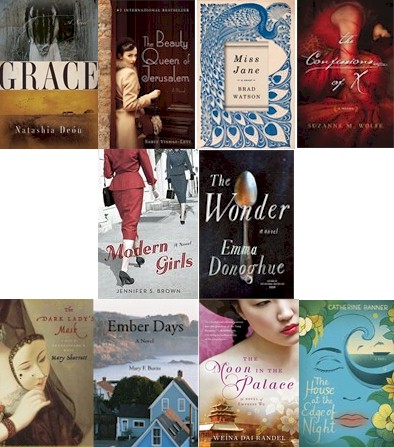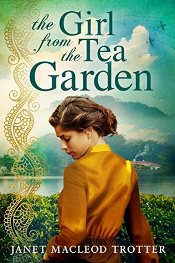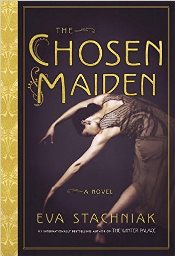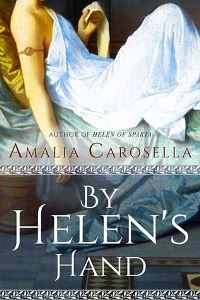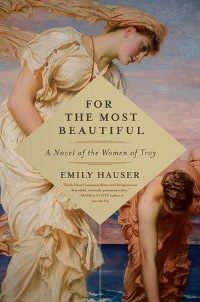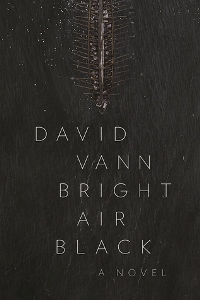http://feedproxy.google.com/~r/TheCreativePenn/~3/_8ugo9j_RZ0/
The Importance Of Time For Selling Books And Building An Author Career With Bryan Cohen
http://feedproxy.google.com/~r/TheCreativePenn/~3/RptICMLIwmk/
Some highlights from a year of reading – 2016
I debated whether to post a list of 2016 favorites. Choosing from among those I’d read in the last year proved challenging, and I spent way too much time dithering over a list. In the end, I decided I’d already made my decisions via Goodreads, so I should stick to it.
Goodreads has a nice display of my 2016 Year in Books. I didn’t meet my challenge of 100 books read, instead getting to just 94 (Goodreads says 89, but I didn’t track manuscripts I’d read for friends, which aren’t in the system anyway, or books I’d read as an award judge). For my choices on which to highlight in this post, I counted only books first published in 2016.
Okay, enough disclaimers. Here are the 10 books I’d rated as five-star reads in 2016, arranged in no particular order.
Natashia Deón, Grace – A deeply affecting novel about motherhood and freedom in the antebellum South, as seen from the viewpoint of an enslaved woman murdered just after her daughter’s birth. Brave, unflinching, and memorable.
Sarit Yishai-Levi, The Beauty Queen of Jerusalem – This debut novel from an Israeli author became an international bestseller in its original Hebrew. It involved me fully in the daily lives, hopes, and sufferings of four generations of Sephardi Jewish women in 20th-century Jerusalem.
Brad Watson, Miss Jane – A beautifully contemplative novel about a woman from early 20th-century Mississippi (based on the author’s great-aunt) who was born with an unusual medical condition that precludes marriage but seizes what joy she can from life all the same.
Suzanne Wolfe, The Confessions of X – This imagined autobiography of the unnamed mistress of Augustine of Hippo is a poetic work of art, literary historical fiction set during an age — the shadowy fourth century AD — about which few historical novels are written.
Jennifer S. Brown, Modern Girls – In this warmhearted yet realistic novel, an immigrant mother and her Americanized daughter in 1930s NYC both find themselves unhappily pregnant. It’s full of wonderful details on Jewish life and customs at the time.
Emma Donoghue, The Wonder – In 1859, an English nurse travels to rural Ireland to investigate the case of a “fasting girl” and discovers a potential crime-in-progress. Devout Catholicism mixes with folk superstition in my vote for the most affecting, suspenseful read of the year.
Mary Sharratt, The Dark Lady’s Mask – The imagined relationship between English poet Aemilia Lanyer and William Shakespeare; the author always has insightful things to say about historical women’s roles and accomplishments.
Mary F. Burns, Ember Days – On the cusp of the 1960s, life-changing secrets emerge among the residents of the small coastal town of Mendocino, California. There are many characters and viewpoints, all distinct, and their religious beliefs, carefully interwoven without preachiness, allow for an abiding sense of hope.
Weina Dai Randel, The Moon in the Palace – This debut novel about the younger years of the future Empress Wu presents a young girl’s transition into womanhood at the imperial court of 7th-century China. Far from a standard tale of royal intrigue, the writing provides entrance into a formal yet sumptuous world.
Catherine Banner, The House on the Edge of Night – A near century-spanning epic set on the fictional isle off the Sicilian coast, Banner’s debut novel combines the lively style of a folk tale with the realism of a meaty historical saga. I found it engrossing and would love to visit Castellamare in person.
And there we have it, with just six hours to spare until the New Year. Thanks very much for following this site, and I hope the next year will bring you lots of good reading!
Jennifer Ryan’s The Chilbury Ladies’ Choir, an uplifting novel of women on the WWII home front
“There’s something bolstering about singing together.” Jennifer Ryan’s charming debut interweaves many women’s voices to create a strong chorus that rings out with heart and the celebration of life.
The story spans barely five months in 1940, but it’s an eventful time for Chilbury, a small Kentish village seven miles from England’s coast. With most men off at war, the vicar disbands the choir, but as with so many other home front duties, Chilbury’s women take up the reins. Their female-only singing ensemble, daring for its time, is successful in more ways than one.
Their stories are told through their writings, and each woman’s account echoes her personality. There’s Mrs. Tilling, a timid widow and nurse worried about her only son in France; Venetia Winthrop of Chilbury Manor, a sophisticated flirt; Kitty, her attention-hungry younger sister; and Edwina Paltry, a conniving midwife. Kitty’s diary entries are fun, since they burst with enthusiasm and teenage melodrama as she dreams about her sister’s longtime suitor and reacts to her changing world.
In letters to her London-based friend, Venetia reveals how her affair with a mysterious artist turns into something more, to her astonishment. Mrs. Tilling’s growing courage to stand up for herself and others will have readers cheering, as will her growing closeness to the burly colonel billeted with her. Edwina’s involvement in a greedy baby-swapping scheme gets soap-opera silly, but her audaciousness never fails to entertain. The fifth and softest voice is that of Sylvie, a Czech Jewish evacuee.
As the village intrigues play out and the Nazi threat reaches England, shattering buildings and lives, shadowy men skulk about in the woods, and the women draw strength from their togetherness. Fans of The Guernsey Literary and Potato Peel Pie Society and the TV series Home Fires should put this uplifting, absorbing novel high on their reading lists.
The Chilbury Ladies’ Choir is published by Crown this Tuesday, February 14th in hardcover and #ebook. The UK publisher is The Borough Press. This review first appeared in February’s Historical Novels Review.
Janet MacLeod Trotter’s The Girl from the Tea Garden, set at the end of the British Raj
Janet MacLeod Trotter has been one of my favorite writers of regional sagas. She’s especially adept at delving into the lives of the working-class men and women of England’s industrial North East. Among other works, she transformed the stories of Catherine Cookson’s grandmother, mother, and Catherine herself into gripping biographical fiction (I reviewed Return to Jarrow in 2009). Her books were the only historical novels I saw for sale at the Beamish Open Air Museum when I visited there a few years ago.
Trotter’s latest books, the India Tea series, are based on her grandparents’ diaries and letters from when they lived in India in the 1920s-40s, and there’s some cross-pollination with her familiar English settings as the characters travel back and forth. The Girl from the Tea Garden is third after The Tea Planter’s Daughter and The Tea Planter’s Bride, which I haven’t read yet, but I’ve never minded arriving mid-way into a series. Enough background was provided for everything to make sense.
The heroine is Adela Robson, who’s an adolescent schoolgirl as the novel opens in 1933. The story follows her through the WWII years as she struggles for acceptance in a world that looks down on those of Anglo-Indian heritage (her maternal great-grandmother was an Assamese woman). Also, as a beautiful young would-be actress, Adela must also look past all of society’s distractions, which include a handsome playboy prince, to find her way back to the people and qualities she values most.
Adela develops a crush on steamboat captain Sam Jackman early on, after she sneaks a ride in his car while fleeing her hated boarding school on her way home to her family’s tea plantation at Belgooree. Her feelings are returned after she grows into adulthood. I liked Sam a lot. The survivor of a troubled childhood, Sam is a decent sort who gets things done but doesn’t crave attention for his honorable deeds. He also makes plain that Britain’s departure from India is inevitable and works toward this ultimate goal – although he feels he can’t be tied down emotionally to accomplish this. There were many times I found myself wishing for greater emphasis on Sam’s experiences and less on Adela’s flirtations and performances; there were also many side-stories, such as one involving a young Indian woman’s desperate plight, that I wished were pursued further. Also, in one instance in particular, Adela comes across as impossibly naïve.
Adela’s emotional journey is emphasized, and has some powerful moments, particularly when she travels to visit relatives in Tyneside and is faced with a life-changing decision. I found the novel strongest in its depictions of complex family relationships and India’s alluring scenery, from the noise and color of the jungle to the wooded hills of Simla. Although I would have preferred greater focus on the many social issues facing India at the time, as a star-crossed love story, the novel works well.
The Girl from the Tea Garden was published by Amazon’s Lake Union imprint in December 2016; I read it from a NetGalley copy.
Shortlist for the 2016 Langum Prize in American Historical Fiction
This afternoon, the Langum Charitable Trust announced the eight novels on the 2016 shortlist for the David J. Langum, Sr. Prize in American Historical Fiction. From the press release, they are:
Barkskins, by Annie Proulx (Scribner)
Champion of the World, by Chad Dundas (Putnam)
The Cigar Factory: A Novel of Charleston, by Michele Moore (Univ. of South Carolina Press)
Exile on Bridge Street, by Eamon Loingsigh (Three Rooms Press)
Fates and Traitors: A Novel of John Wilkes Booth, by Jennifer Chiaverini (Dutton)
A Friend of Mr. Lincoln, by Stephen Harrigan (Knopf)
Ginny Gall, by Charlie Smith (Harper)
I Will Send Rain, by Rae Meadows (Henry Holt)
How many have you read? I’ve read two, and the links above go to the reviews on my site.
The 2016 winner and finalist will be announced in about a month. For more details on the prize, see the Langum Charitable Trust. To submit a novel for consideration, view the directions available at the site. The readers’ guidelines for the prize may also be of interest.
The prize is awarded annually to the “best book in American historical fiction that is both excellent fiction and excellent history.” Last year’s winner was Faith Sullivan’s Good Night, Mr. Wodehouse (Milkweed Editions). See the site for details on previous winners and finalists.
The Chosen Maiden by Eva Stachniak, an expressive novel about Polish dancer and choreographer Bronislava Nijinska
One can rely on Stachniak (The Winter Palace, 2012) for engaging, well-researched fictional portraits of dynamic historical women. As her story of renowned Polish ballerina and choreographer Bronislava Nijinska unfolds against the politically troubled backdrop of late nineteenth- through mid-twentieth-century Europe, readers become both active participants in her continual pursuit of creative excellence in dance and captivated spectators.
Born in Minsk to traveling professional dancers, Bronia’s early life and rigorous training at Saint Petersburg’s Imperial Ballet School are dominated by her older brother, Vaslav Nijinsky, depicted as an artistic genius whose daring performances motivate her—and overshadow her own talents. Around this time, ballet is moving from its formal, classical roots into more fluid forms of expression, and Vaslav and Bronia are part of this controversial transformation.
As she emerges as an innovative artist in her own right, Bronia’s working relationship with impresario Serge Diaghilev—founder of the Ballets Russes, her brother’s probable lover, and for whose company she dances and choreographs in Paris and elsewhere—is portrayed with skill. With striking depth of feeling, Stachniak brings us firsthand into the moments when Bronia embodies the onstage personas she creates.
The novel also illustrates her family life, including marital discord, Vaslav’s increasing mental instability, and the value of motherhood. A memorable literary rendering of a remarkable woman’s life.
The Chosen Maiden will be published by Doubleday Canada next Tuesday (464pp, trade pb, $18 US, or $24 in Canada). This review was submitted for publication in Booklist‘s January 1st issue. While the publisher is Canadian, the book is being distributed in the US, so American readers shouldn’t have trouble obtaining it.
Nicola Cornick’s The Phantom Tree, a time-slip mystery of modern and Tudor England
It’s easy to feel sorry for Mary Seymour. Daughter of Henry VIII’s widow, Katherine Parr, and her reckless fourth husband, who was executed for treason, Mary was orphaned by her first birthday. A burden to her relatives during her life, she was also obscure in death, which has gone unrecorded. Many assume she died as a child, but the speculation that she survived to adulthood presents a provocative “what if.”
Nicola Cornick’s second romantic time-slip novel (after House of Shadows) is a historically rich work that uses this premise as the springboard for a story about an unlikely sisterhood that extends into two eras.
Alison Bannister, née Banastre, was born into the 16th century but has somehow been trapped in the 21st century for over a decade. She and Mary Seymour had spent their later childhood and adolescence together at Wolf Hall in Wiltshire, along with a passel of other orphaned cousins. Several years separate the pair, and their personalities are too different to allow for friendship: Alison is beautiful yet hard-edged, while Mary is innocent and naïve, and Mary’s higher social standing invites feelings of jealousy. Still, later circumstances compel them into a pact. Alison had helped Mary flee a dangerous situation at Wolf Hall, and in exchange, she demands Mary’s assistance in finding the son she was forced to give up.
Unable to return to her own time, Alison has made a new life for herself in modern England but doesn’t let herself get close to anyone; she remains haunted by her lost child. Her first clues on what happened to him emerge via a portrait of Mary, which she finds while browsing an antique shop in Marlborough. Unfortunately for Alison, examining the painting’s provenance and the objects depicted within it means reconnecting with an old flame, Adam Hewer, a rising celebrity historian who’s staked his career on its identification as a newly discovered Anne Boleyn portrait.
Adam shows dubious professional judgment, as do the portrait’s modern authenticators, but he’s willing to concede he may be wrong. Several mysteries are carefully woven through both timelines. What became of Alison’s son? What forced Mary to leave Wolf Hall? What’s the true identity of the mysterious man who communicates telepathically with Mary? Perhaps written as a touching homage to Mary Stewart’s classic Touch Not the Cat, Mary’s secret relationship with this man she’s never seen is often her sole source of hope.
 |
| author Nicola Cornick |
Cornick’s portrait of country life in Tudor England is presented with a tactile clarity that avoids romanticizing the time. One can feel the damp chill that pervades Wolf Hall in winter, smell the ripe odors of the local market, and observe how women’s powerlessness gives rise to discord and rancor. Alison’s under no illusion about a woman’s lot back then – if not for her missing son, she’d stay put in 2016 – and a wonderful scene of her present-day visit to a medieval church illustrates this. Moreover, Alison’s attempts to locate the past via modern clues demonstrate how much the past remains with us.
There were traces of history everywhere: in street names, on inn signs, in old tracks and ancient hedgerows, buried walls and tumbled gravestones. Scratch the surface and it was there.
The Phantom Tree is a skillfully written multi-stranded mystery with thoughtful reflections on two women’s quests for belonging. Read it not only for its evocation of the 16th century but for greater appreciation of the conveniences and freedoms we take for granted today.
The Phantom Tree was published by HarperCollins UK’s HQ imprint on 29 December (£7.99, paperback). Thanks to the publisher for approving my NetGalley access; this is the second stop on the book’s blog tour.
Some new historical novels retelling the myths of ancient Greece
The heroic and tragic stories from Greek mythology have often been the foundations for historical novels set in long-ago times. Novelists such as Mary Renault, Robert Graves, Margaret George, Colleen McCullough, and Madeline Miller, to name a few, have retold Greek myths in their own styles. They have humanized characters from the ancient tales, showed them from new perspectives, and placed them in a well-researched Bronze Age setting. After being sent a copy of Bright Air Black for review last month, I looked around and noticed many historical novels of this type had been published recently or will be soon. While this may not be significant enough to call it a trend, it’s definitely good news for readers who appreciate historical fiction set in the very distant past.
Here are nine books from 2016 and 2017 that fit this category. Please note that this list includes both US and UK releases. If you know of others that belong, please leave a comment.
This Bronze Age-set historical fantasy, set two decades before the author’s Helen novels, retells a lesser-known myth: that of Hippodamia, who is raised by centaurs, and her husband Pirithous, future king of the Lapiths. CreateSpace, Sept. 2016.
Set in Bronze Age Greece, and subtitled “a novel of Homer’s Odyssey,” Dillon’s version recounts the events from the epic poem from the viewpoint of Odysseus’s son, Telemachus. Pegasus, August 2016.
Hauser’s debut novel, first published in the UK last year, retells the Trojan War story from the viewpoints of two women: Briseis and Krisayis. Pegasus, January 2017.
Hauser’s second novel, out in the UK later this year. will be a retelling of the myth of Atalanta, who survived being abandoned as an infant and grew into a swift runner and warrior. Doubleday UK, June 2017.
Oedipus and Antigone are the best-known figures from Sophocles’ two tragedies. Haynes’ novel retells these stories from the viewpoints of Jocasta and Ismene, the mother and daughter whose destinies play out in the ancient kingdom of Thebes. Mantle (UK), May 2017.
Like the previous projects from the “H Team” (which include A Day of Fire, about Pompeii, and A Year of Ravens, about Boudica’s rebellion), A Song of War is a collaborative novel in which multiple authors contribute different characters’ perspectives on a historical event of significance. Here, seven historical novelists retell the epic of the Trojan War. CreateSpace, October 2016.
A retelling of the story of Medea, Jason, and the voyage of the Argonauts. I’ll be posting a full review later on. The cover shows, as seen from above, a ship skimming through dark waters. Black Cat, March 2017.
Pachinko by Min Jin Lee, an engrossing historical saga of Korean life in 20th-century Japan
Pachinko is a novel that exemplifies the word “epic.” Following the members of a close-knit family from a rural fishing village on a Korean island to various locales in Japan and elsewhere, it spans nearly 90 years and almost 500 pages. I would have been happy if it were longer.
It’s a big story, rich in character and activity. These aspects, plus the clean, straightforward writing style, make for a brisk, absorbing read. It opens in 1910 with the circumstances that lead to the birth of the principal heroine, Sunja, who grows into a sturdily built, handsome young woman.
When a liaison with a wealthy fish broker leaves her pregnant, and Sunja learns he can’t marry her, one of the guests recuperating at her mother’s boardinghouse makes a surprising offer. Due to his frailty, Baek Isak never expected to wed anyone, but his Christian beliefs (he’s a Presbyterian minister from Pyongyang) and generosity of spirit leads him to ask for Sunja’s hand. When the couple relocates to Osaka and moves into Isak’s brother’s home in the Korean ghetto, Sunja views firsthand the plight of immigrants living in a country that doesn’t welcome them.
The novel was revelatory for me, as it introduced me to an aspect of history about which I’d known little. Between 1910 and 1945, Korea was a colony of Japan. Through the experiences of Sunja, her husband, in-laws, and descendants, we get to see the ramifications of this part of history. As one Korean man remarks in the novel, “For people like us, home doesn’t exist.” In Japan, Koreans are negatively stereotyped as belonging to a “cunning and wily tribe” and “natural troublemakers.” They can’t rent decent housing or obtain the best jobs. On the other hand, any Koreans who adapt to Japanese ways would be looked upon suspiciously back home. The members of the Baek family must always be on their best behavior, since they represent their country of origin.
Over the years, through constant toil, their fortunes rise. The meaning of the title (which refers to Japanese pinball gambling, a hugely popular activity there) isn’t obvious in the beginning but becomes clear in the novel’s later sections.
Pachinko tells a universal immigrant story, but it also offers enough specificity to provide a full picture of the geography and customs of 20th-century Korea and Japan. The novel’s scope lets readers see how the family acclimatizes themselves to an increasingly modernized Japan while keeping their own identity as Koreans. Because of the discrimination they face, it’s impossible for them to fully assimilate.
Two more elements of note. Writing instructors and readers often decry the use of “head hopping,” that is, the switching of viewpoints within a scene. Lee shows why this so-called rule was made to be broken. She uses this technique on occasion, but it’s performed subtly and has the effect of enhancing the scene’s emotional impact. Also, while Sunja often hears the adage that suffering is a woman’s plight, she and her equally industrious sister-in-law, Kyunghee, are the engines that ensure their family thrives and survives. The family’s men, while (mostly) decent and hardworking, aren’t always as fortunate. This emphasis felt curious to me; I couldn’t tell if it was meant to be symbolic of a larger theme or not.
If you don’t know anything about this historical era or part of the world, no need to worry. Lee will bring you into her characters’ world so completely so that they’ll feel like family. An engrossing historical saga, Pachinko’s themes are also significantly relevant to the world we live in today.
Pachinko will be published next week by Grand Central in hardcover and #ebook ($27 or $13.99, 496pp). Thanks to the publisher for approving my NetGalley access.


